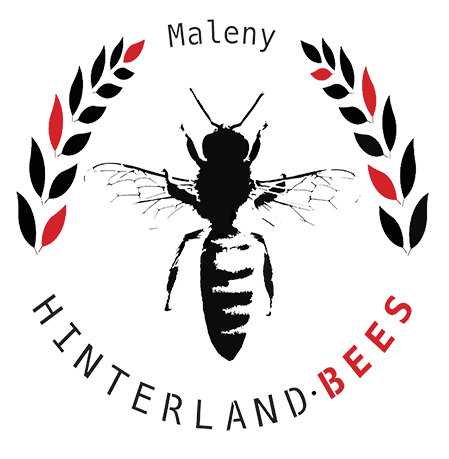Buckets of Honey and Masses of Bees
One of the things we love at Hinterland Bees is sharing our knowledge. We love seeing the enthusiasm and astonishment felt by our customers when we reveal to them the full extent of the beehive that has been thriving in their ceilings or walls.
With newfound respect and understanding of bees instilled in our clients, we have achieved more in our work than just removing and saving another beehive. Like most things in life, the more we experience and understand something, the more we appreciate it. As a result, we can empower one more person with some extra knowledge to help save the bees.
This beehive removal from a Noosa Heads home garage ceiling was hampered a little by the awkward position the colony chose. They built some of their combs over the top of the lower level brick wall, and we had to be at full stretch to access some of them.
This hive had also experienced a partial meltdown of its honey stores in some previous sweltering weather, further exacerbated by the hive's location on the western side of the house. The afternoon sun melted some of the honeycombs, causing them to collapse. After things cooled down, the bees got to work making repairs and rejoining all of the comb structure together again. The result is a tangle of comb that is a challenge to remove without having honey running all over the place!
We got lucky with the brood comb as they remained intact and the perfect size to fit straight into standard Langstroth deep beehive frames. These were classically structured brood combs typical of any that might be found inside a standard beehive - a band of honey at the top, followed by a band of pollen and bee-bread surrounding the brood cells.
As we got to the other side of the brood nest, there were even more combs packed with protein-rich pollen.
This hive was incredibly well resourced; not only had the bees diligently loaded their pantry with comb after comb of bee-bread, but we also removed more than 50kg of honey.
The bees make bee-bread with about 70% pollen and 25% nectar. It also contains a bit of bee saliva, which inoculates the pollen with a broad range of yeasts resulting in a fermentation and predigestion process. It consists of simple sugars, protein, minerals, vitamins and, fatty acids - just what the bees need to produce the royal jelly to feed the developing larvae
